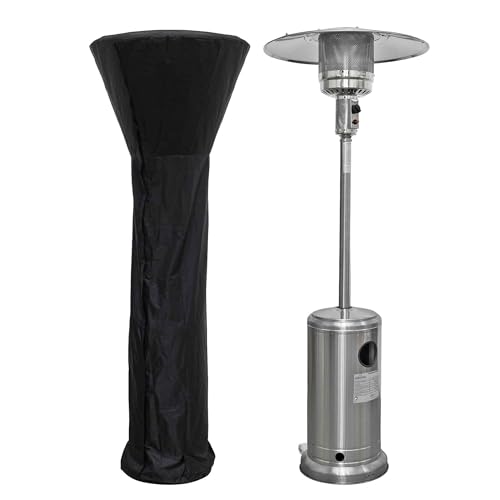Why We Our Love For Patio Heating Equipment (And You Should Too!)

Patio Heating Equipment: A Comprehensive Guide
As outdoor home continue to get popularity, the desire for comfort and satisfaction throughout cooler months has surged. To create a year-round patio experience, investing in the right heating equipment is crucial. This post will check out different types of patio heating equipment, their advantages and downsides, installation factors to consider, and frequently asked questions regarding patio heating.
Types of Patio Heating Equipment
When picking patio heating equipment, it's essential to comprehend the numerous options available. Below is an in-depth contrast of the most popular types of patio heaters:
| Type of Heater | Description | Advantages | Downsides |
|---|---|---|---|
| Gas Patio Heaters | These are normally tall, freestanding systems powered by propane or gas. | - Provides a considerable amount of heat - Portable (propane units) - Quick to warm up | - Requires gas lines or propane tanks - Can be expensive to run - Safety issues if not utilized effectively |
| Electric Patio Heaters | These can be ceiling-mounted, wall-mounted, or portable units powered by electrical energy. | - Easy to set up and use - Quiet operation - No requirement for gas lines | - Limited heating range - Requires an electrical outlet - Higher operating expense if used extensively |
| Infrared Patio Heaters | Infrared heaters produce infrared radiation, warming things more than the air. | - Instant heat - Efficient and ecologically friendly - Can be installed in various setups | - Affects only the area within line of sight - May not be as effective in windy conditions |
| Fire Pits and Fireplaces | Wood-burning or gas-powered features developing a cozy atmosphere. | - Natural ambiance and warmth - Often multifunctional (cooking options) - Social collecting centerpiece | - Requires more maintenance - Risk of open flames - May have regional regulations |
| Portable Patio Heaters | Smaller, movable systems created for simple transportation. | - Versatile and versatile to various settings - Many options offered - Easy storage | - Limited heating area - May not be as powerful as larger units |
Key Considerations for Patio Heating Equipment
Selecting the best type of patio heating equipment depends upon a number of elements. Here are some important considerations:
- Size of the Patio: Larger spaces might need more than one heating system or a more effective heater to make sure effective warmth circulation.
- Area: Consider where your heater will remain in relation to wind, shade, and possible obstructions that might obstruct heat.
- Kind of Gathering: The type of activity you intend on will influence your choice. For casual interacting socially, a fire pit might be perfect, while a more formal dining setup might take advantage of a gas or electric heater.
- Safety Regulations: Check local regulations concerning outdoor heating equipment to ensure compliance and safety.
- Fuel Source: Determine if you prefer electricity, propane, natural gas, or wood. Each has its advantages and disadvantages relating to cost, convenience, and schedule.
Installation Tips
- For gas patio heaters, engaging an expert for installation is highly suggested to ensure security.
- Electrical systems frequently require a certified electrical contractor for installation, especially for permanent components.
- Portable heaters offer versatility, but ensure they are positioned on steady ground and away from flammable products.
Popular Brands and Models
A number of brands have developed themselves as leading makers of patio heating equipment. Here are some extremely concerned options:
- Mr. Heater: Known for its large selection of propane heaters perfect for various outdoor settings.
- Fire Sense: Offers a wide range of stylish and functional electric and gas patio heaters.
- Cuisinart: Famous for its outdoor cooking equipment, they also offer portable heating solutions.
- AZ Patio Heaters: Features a selection of stylish gas patio heaters that mix well with modern outdoor aesthetics.
Often Asked Questions (FAQs)
1. How much heat does a patio heater provide?Patio heaters normally range from 30,000 to 50,000 BTUs( British Thermal Units), offering enough warmth for locations of up to 200 square feet, depending on the model and kind of heater. 2. Are patio heaters safe to use during windy conditions?While lots of heaters
are created to hold up against some wind, high winds can minimize performance and safety. It's recommended to keep an eye on wind conditions and utilize heaters designed for outdoor use. 3. Can Gas Outdoor Heaters leave my patio heater outside throughout winter?Many patio heaters are developed to withstand outdoor conditions, however it's smart to store them in a shed or garage throughout extreme
weather condition or cold weather to lengthen their life expectancy. 4. Just how much does patio heating equipment cost?Prices vary widely based on the type and model, ranging from ₤ 100 for standard portable heaters to ₤ 1,500 or more for high-end commercial-grade options. 5. Do patio heaters need
maintenance?Regular maintenance consists of examining gas connections for leakages(for gas heaters), cleansing components for electrical models, and ensuring all mechanical parts remain in good working order. Investing in patio heating equipment can
substantially boost outdoor convenience and extend the usability of patio areas. Understanding the different options, factors to consider, and finest practices for installation and maintenance can cause notified
decisions that line up with specific needs and choices. With the best heater, outdoor events can stay satisfying, warm, and inviting through the chill of the cooler months, guaranteeing that the patio is not simply a summer retreat however a year-round sanctuary.

